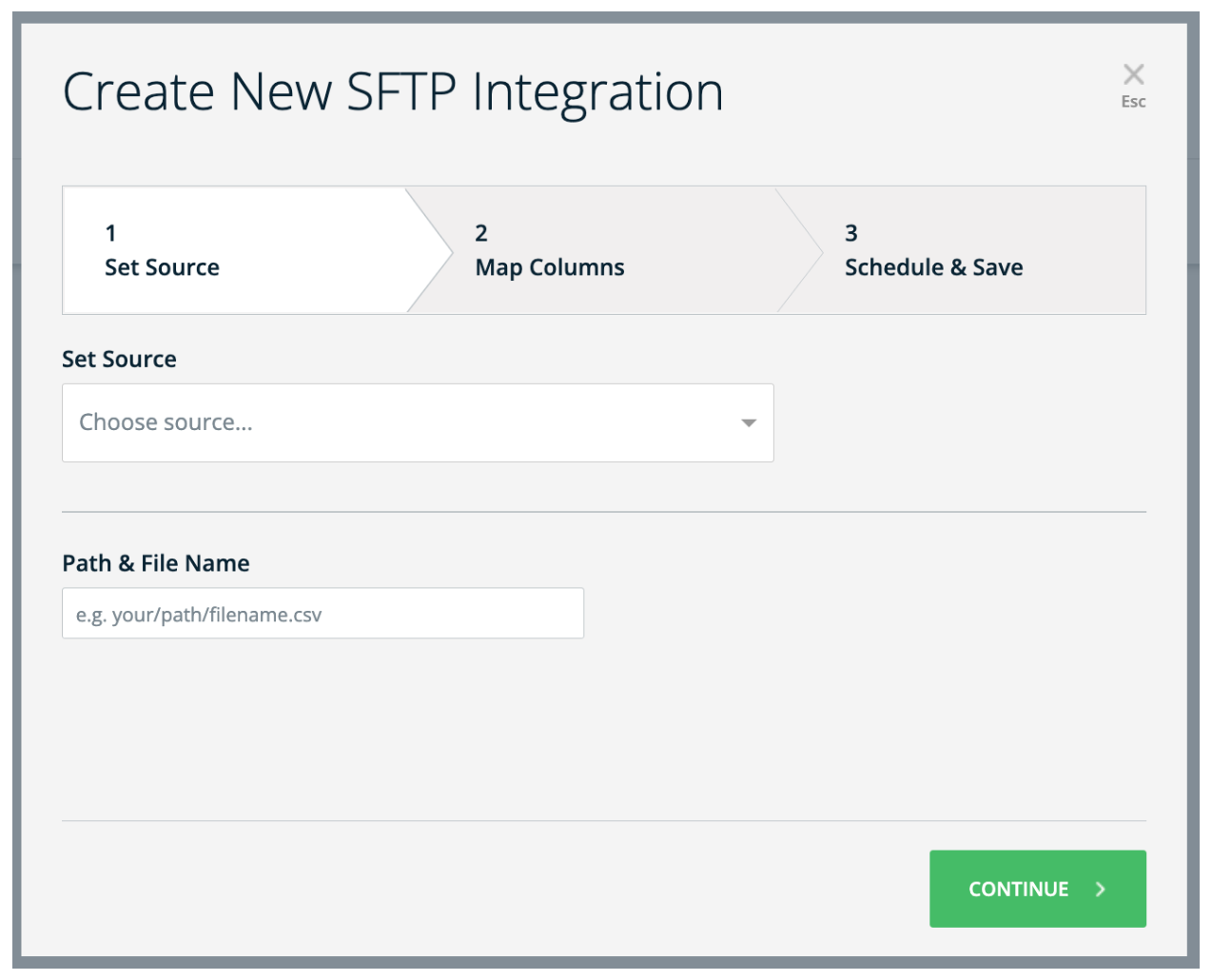Welcome to the
WalkMe Help Center
Please log in to continue

Please log in to continue

The SFTP integration is relevant for customers who require secure and reliable file transfer capabilities to handle sensitive or large data sets, comply with strict regulatory standards, automate business processes, or integrate seamlessly with existing IT infrastructures.
The WalkMe SFTP integration allows for seamless bi-directional communication between WalkMe and the customer's SFTP server, regardless of whether it is managed directly by the customer or through a third-party provider. Users can establish a connection with a remote SFTP server by authenticating with either a username/password combination or public key authentication. The integration offers two encryption algorithms, RSA2048 or ECDSA521, for those who opt for public key authentication. This ensures a secure file transfer process for both importing data to WalkMe and exporting data from WalkMe.
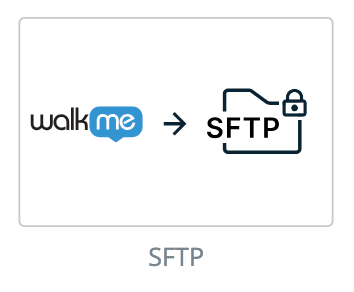
Navigate to Insights Classic: https://insights2.walkme.com/
Select the system you would like to setup the integration on from the Monitored Systems widget
Click the Integrations tab in the sidebar
Click SFTP integration under Outgoing Scheduled Integrations
The user should begin by establishing an SFTP destination, which involves specifying the method of accessing their SFTP server (this step can also be initiated from Step 3 detailed below).
Enter the the required information in the Create New SFTP Destination fields:
Destination Name: A unique name assigned by the user to identify the created destination
Host Name: The address of the SFTP server you're connecting to
Port: The port number used for the SFTP connection
User Name: The account name for SFTP server access
Optional Directory Path: A specific folder path on the SFTP server for targeted file operations
Authentication Method: SFTP credentials/Public Key
Based on the selection above, the user will also need to enter/select one of the following:
Password: (if SFTP credentials are chosen)
Encryption Algorithm: RSA2048 or ECDSA521 (if SFTP Public Key is selected)
Note: When opting for the Public Key option, the user must also copy the public key provided by us and add it to their SFTP server's authorized keys list, enabling WalkMe to connect to their SFTP server
Click Test once finished to verify the connection
Click Save
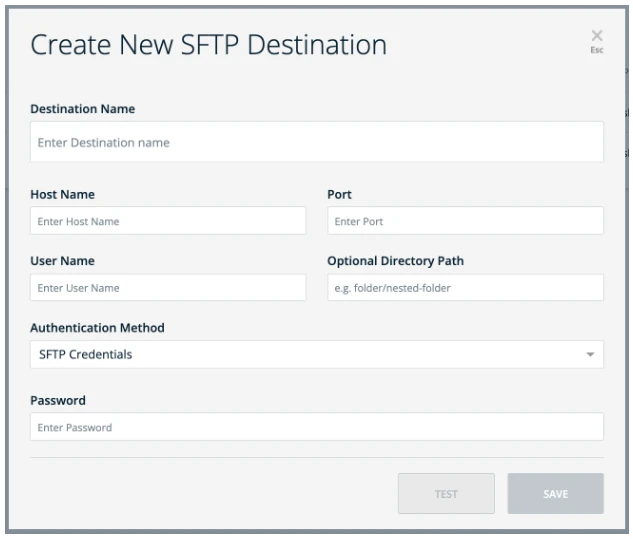
This step involves two key actions as outlined below:
Define Report:
Choose the report's name and the origin environment from which you intend to export the data
Select the desired reporting frequency and determine whether it should be set up as a recurring process
Set Destination:
Define a new Destination OR select a Destination from a list
Selecting a Destination from the list will auto populate the rest of the information
Upon clicking Save after completing these steps, a new integration will be created. This integration can then be executed manually on request or set to run automatically according to the configuration defined in Step 2.
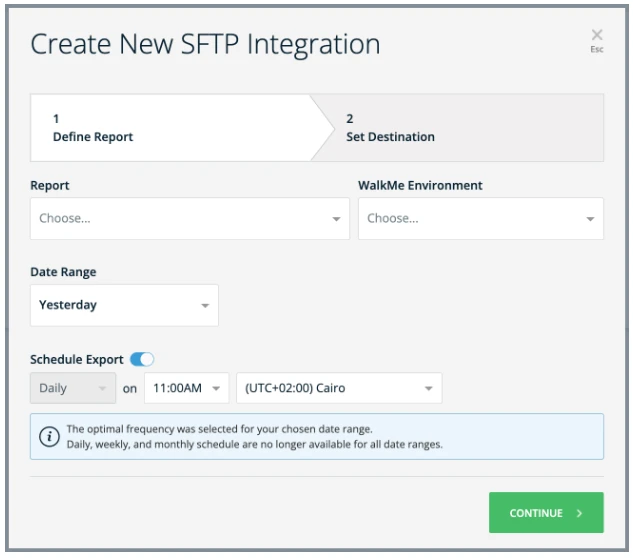
The user should begin by establishing an SFTP source - a location from which this file will be accessible. This involves specifying the authentication method for accessing their SFTP server (this step can also be initiated from Step 2, as detailed below).
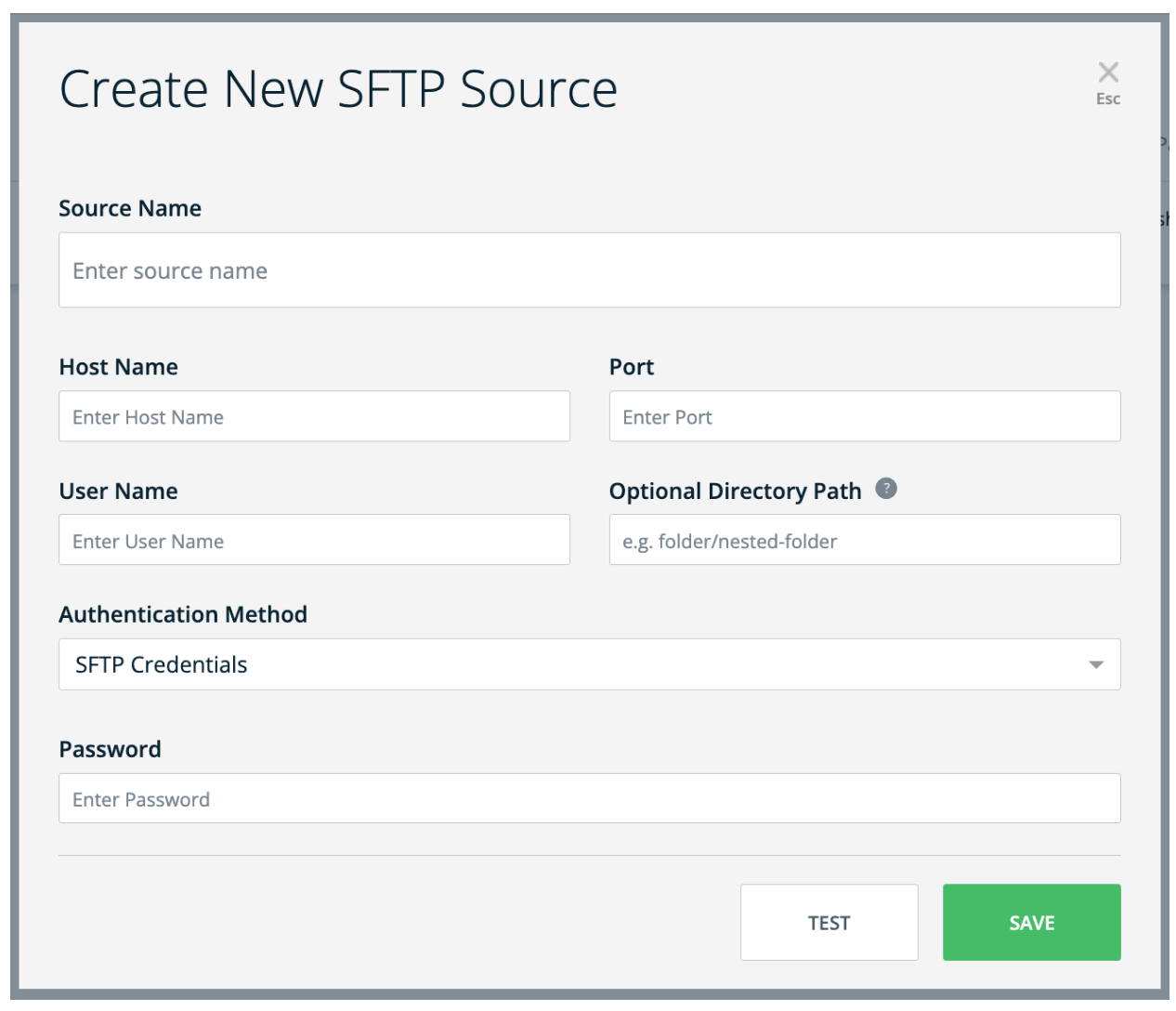
This step involves three key actions as outlined below:
Upon clicking Save after completing these steps, a new integration will be created. This integration can then be executed manually on request or set to run automatically according to the configuration defined in Step 3 above.
